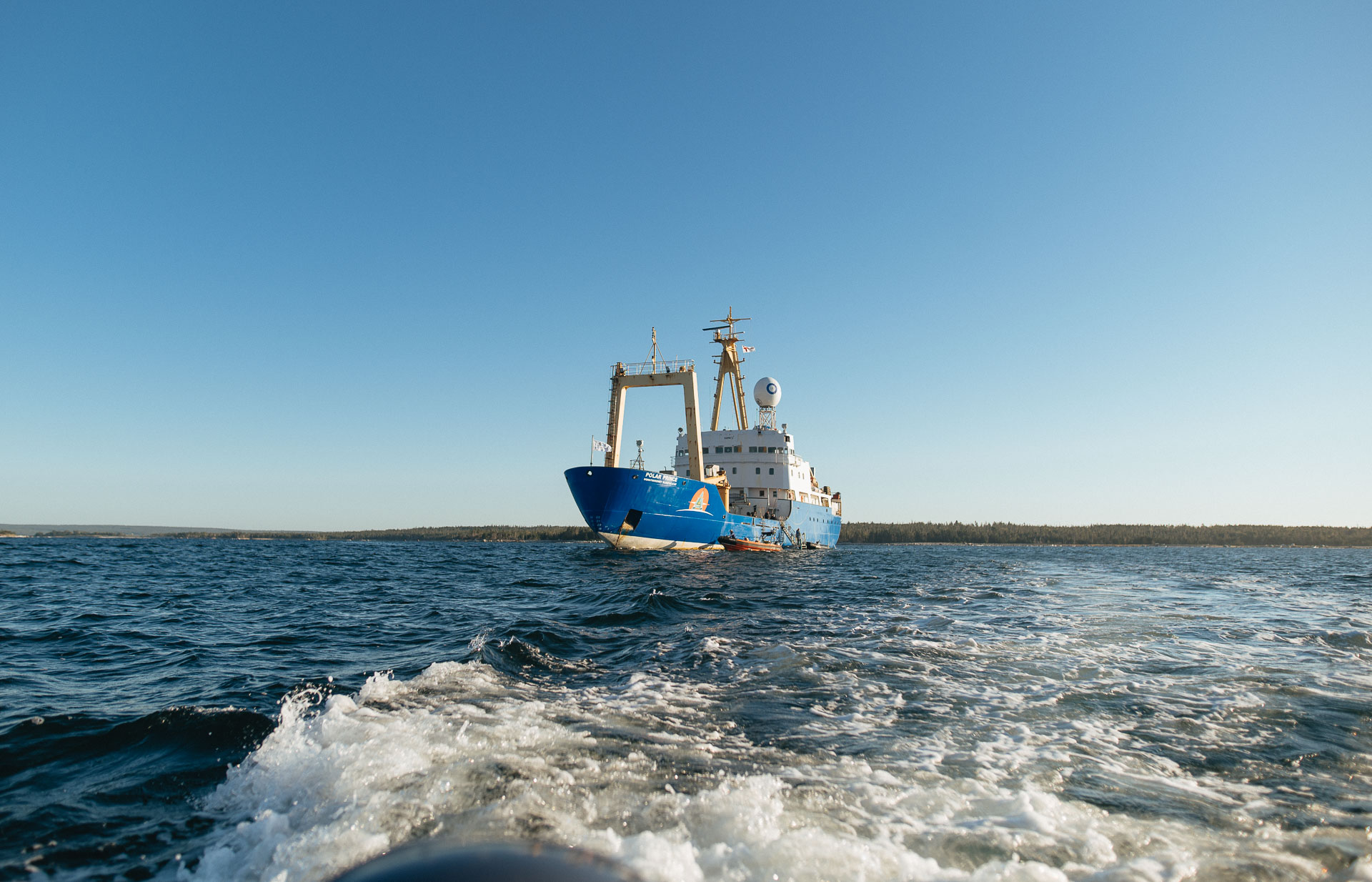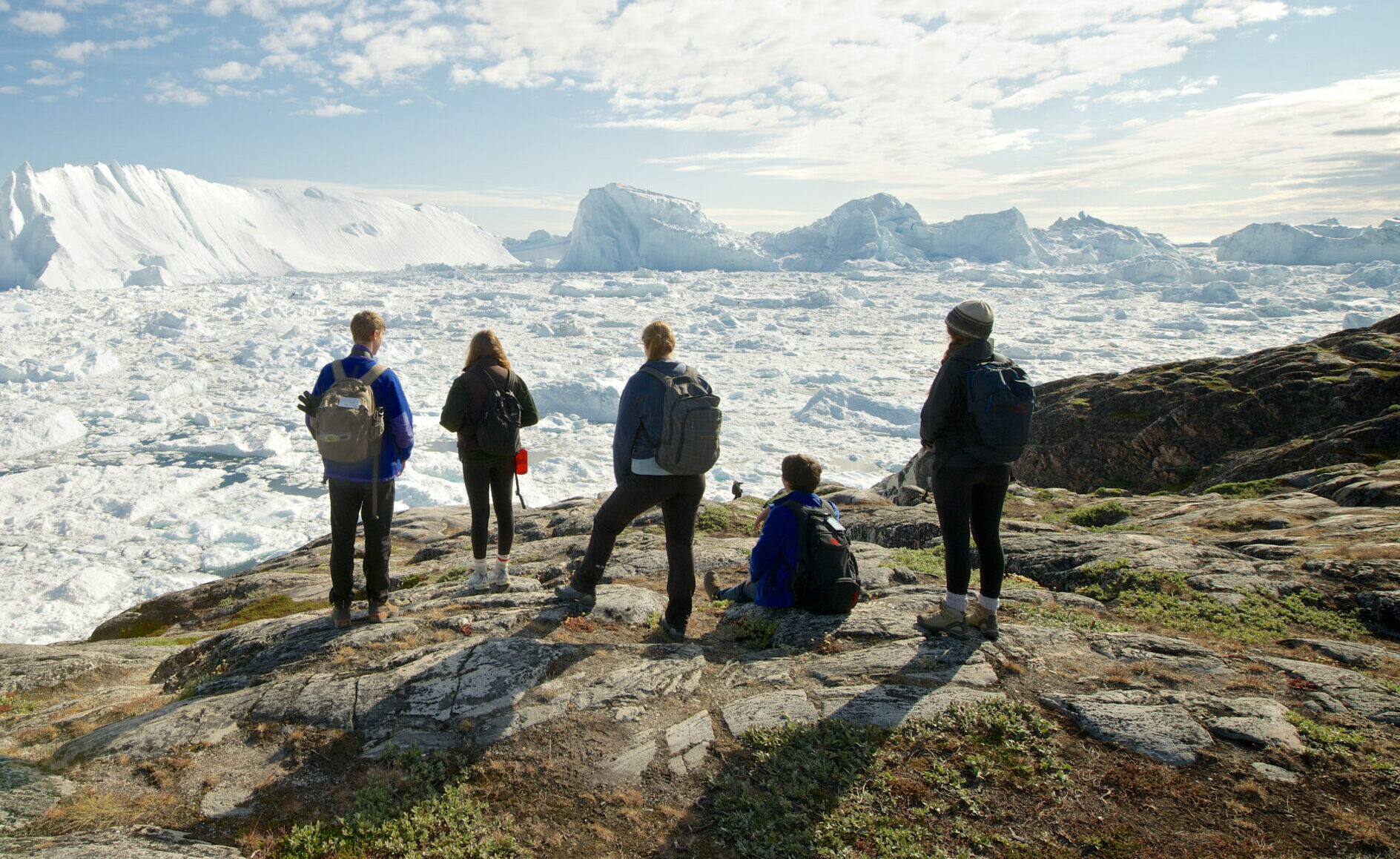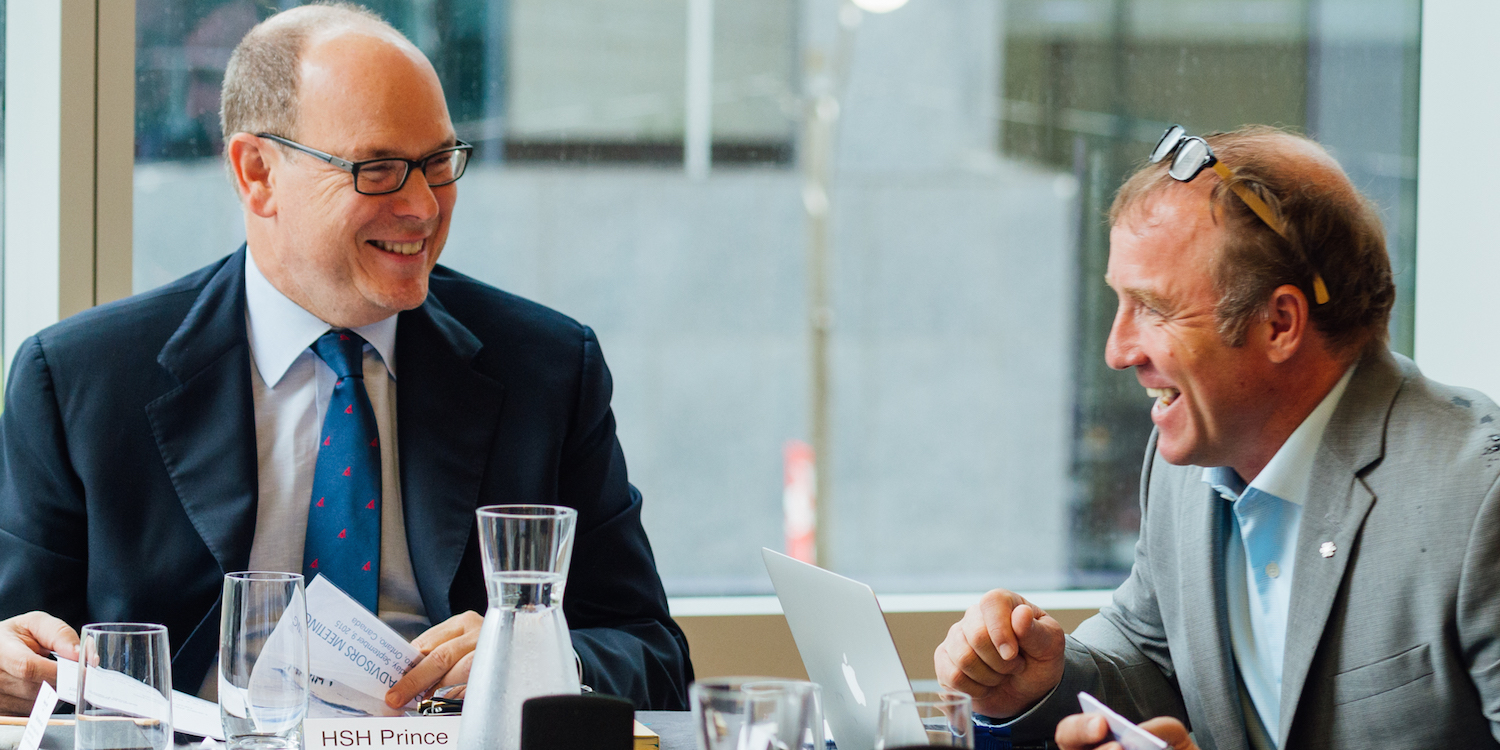Blue Futures Pathways Expedition: Newfoundland and Labrador – Update 3
On Friday, we woke up surrounded by the cliffs of Gros Morne National Park, a UNESCO world heritage site on the west coast of Newfoundland. There, we walked on the earth’s mantle on the Tablelands trail, and learned about the plants that survive in the harsh conditions of the glacially carved valleys. We were also treated to a special performance by musician-in-residence Kellie Loder.

We then went to the Bonne Bay Marine Station to learn about marine life in the waters in and around the park. We ended the afternoon connecting with the water by paddle boarding, kayaking and swimming in Gadds Harbour, just a short Zodiac ride away from the marine station.
The next day, in the town of Stephenville, we heard a presentation about Project Nujio’qonik, a green hydrogen project by World Energy GH2 that will be located in Stephenville and the Bay St. George area. The project will use wind energy to produce green hydrogen and liquid ammonia that can be used as renewable fuel for ships and other purposes. Participants asked company and town representatives everything from the environmental to the social impacts of the proposed project. As we considered sustainability, we also discussed the impact large projects might have on rural communities in need of an economic boost.

In Stephenville, we said goodbye to Dr. Sherry Scully and John Cross and welcomed Chief Misel Joe of Miawpukek First Nation, as well as Paul Brett of Memorial University. Together, we watched a short movie about Chief Joe’s journey, alongside other members of his nation, on a birchbark canoe to St. Pierre & Miquelon to retrace old trading routes between the two communities.
“We’re people of the land and people of the ocean,” Chief Joe said as he explained the history of maritime travel for the Mi’kmaq.
We woke up to rocky seas on Sunday, as strong easterly winds stirred up swell. We spent the day on board learning about Miawpukek First Nation’s marine conservation efforts from Chief Joe and Greg. Chief Joe reminded us that what happens on the land impacts the ocean, and vice versa. We also learned a bit about ocean mapping and built remotely operated underwater vehicles (ROVs) with Paul.

It was close to supper time when we finally arrived in Francois, a fishing outport located at the end of a small fjord. Francois was heavily affected by the cod moratorium of 1992 and continues to see a declining population base as young people move away. But the community remains steadfast, refusing relocation offers from the government. After a little hike around town, we understand why. It’s a beautiful place, with welcoming people. We had a potluck dinner there, and a Newfoundland kitchen party with the community.
On Monday, we arrived in Conne River, home of the Miawpukek First Nation. Though the vessel we’re on is owned by the nation, this is the first time it sailed there. Community members took turns touring the ship as our expedition team and participants learned about Mi’kmaw culture on land. We had tea and Luskinikin (traditional bread) with Elder Priscilla Drew, took a medicine walk with Chief Joe and other community members, and had moose soup for lunch. It was so delicious that some of us had seconds!

That afternoon, Kellie performed for the community, followed by throat-singing and Inuit drumming by Alex and Rosemary. Miawpukek youth played the drum, sang Mi’kmaq songs, and performed traditional dances as well. Connor, a participant from Millbrook Mi’kmaq First Nation in Nova Scotia, was also invited to play the drum and sing.
Understanding the history, cultures and livelihoods of coastal communities help us better contextualize what a Sustainable Blue Economy means.
Back on the ship, participant Kianna Bear-Hetherington shared stories about her experience as a Wolastoqey woman in the science, technology, engineering, and mathematics (STEM) fields. Kianna is the first Indigenous valedictorian in a STEM-related field at the University of New Brunswick where she studied.

Educator Ken Paul, a member of the Wolastoqey community of Neqotkuk who has a deep expertise in Treaty-protected rights, fisheries and ocean sciences, shared with us a framework for a Sustainable Blue Economy that is based on the medicine wheel teaching, as well as the Two-Eyed Seeing concept. Called Etuaptmumk in Mi’kmaq, the term was coined by Elder Albert Marshall, his late wife Murdena Marshall, and biology professor Cheryl Bartlett. It refers to seeing the world with the strengths of both Indigenous ways of knowing and Western ways of knowing for the benefit of all.
“You can’t have your Western knowledge here, and Indigenous knowledge there and call it Two-Eyed Seeing,” said Ken. “From time to time, there will be conflict between the two knowledge systems. It’s working through that that’s important.”
When Chief Joe came on board, he taught us the Mi’kmaq word “kesalul,” or “I love you.” After so much time connecting with communities, each other and nature, this word comes to mind as we reflect on the day. Now on we go to Placentia Bay!





